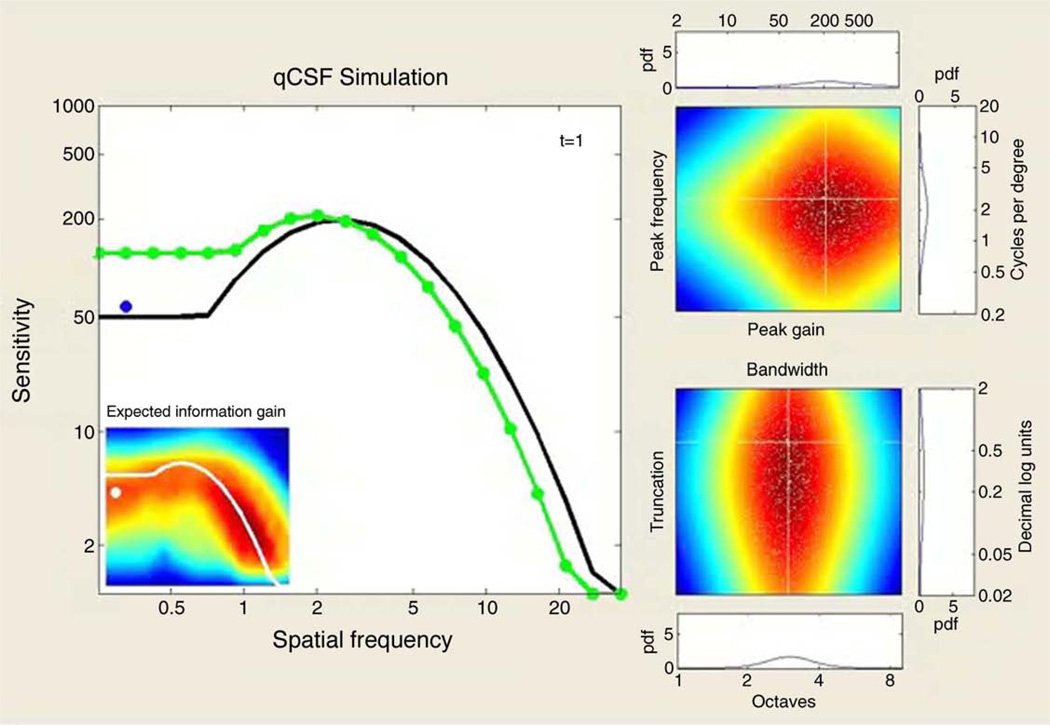Movie 1.
The movie demonstrates a simulated 300-trial sequence of the qCSF application in a 2AFC task. In addition to the true CSF (black line), the large leftmost panel presents each trial’s outcome and the subsequently updated qCSF estimate (green line). For each simulated trial, the selected grating stimulus is presented as a dot, whose color represents a correct (green) or incorrect (red) response. The inset presents the results of the qCSF’s stimulus selection algorithm (the pre-trial calculation of expected information gain as a function of grating frequency and contrast), with the updating qCSF estimate (white) overlaid as a reference. The right-hand panels demonstrate the trial-by-trial Bayesian update of the probability density defined over four CSF parameters; in addition to a pair of 2-D marginal densities—defined by peak gain and peak frequency (top), and bandwidth and low-frequency truncation (bottom)—the 1-D marginals for each parameter are presented. The white cross-lines represent the targets of parameter estimation: the observer’s true CSF parameters. The small white dots represent Monte Carlo samples of the probability density, which accelerate the pre-trial calculations (see Appendix A). At the demo’s completion, the main plot’s inset presents the bias of AULCSF estimates (in percent) as a function of trial number for the full-simulated run. Several features of the demo providing evidence for the qCSF’s successful convergence are: (1) the overlap of the CSF estimate with the true CSF; (2) how rapidly the stimulus selection algorithm excludes large regions of the stimulus space and focuses on the region of the stimulus space corresponding to the true CSF; (3) the aggregation of probability mass in the parameter space regions corresponding to the true CSF parameters; and (4) the convergence of the AULCSF error estimate toward 0%.

